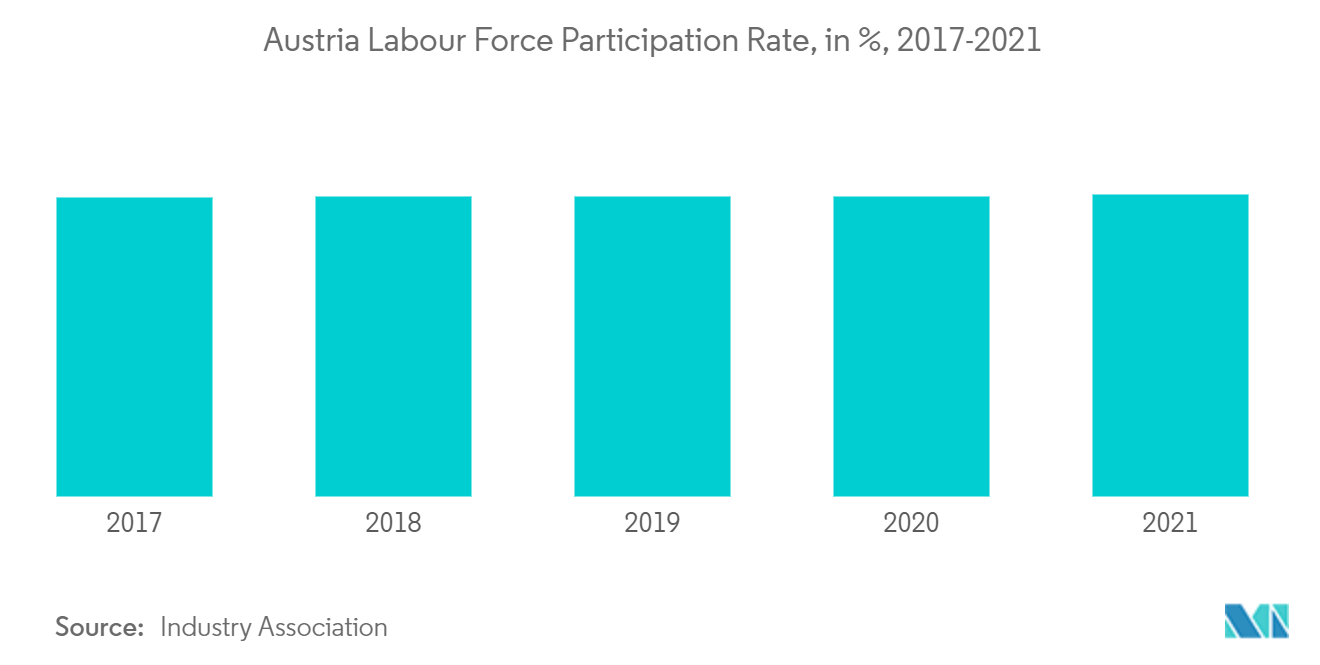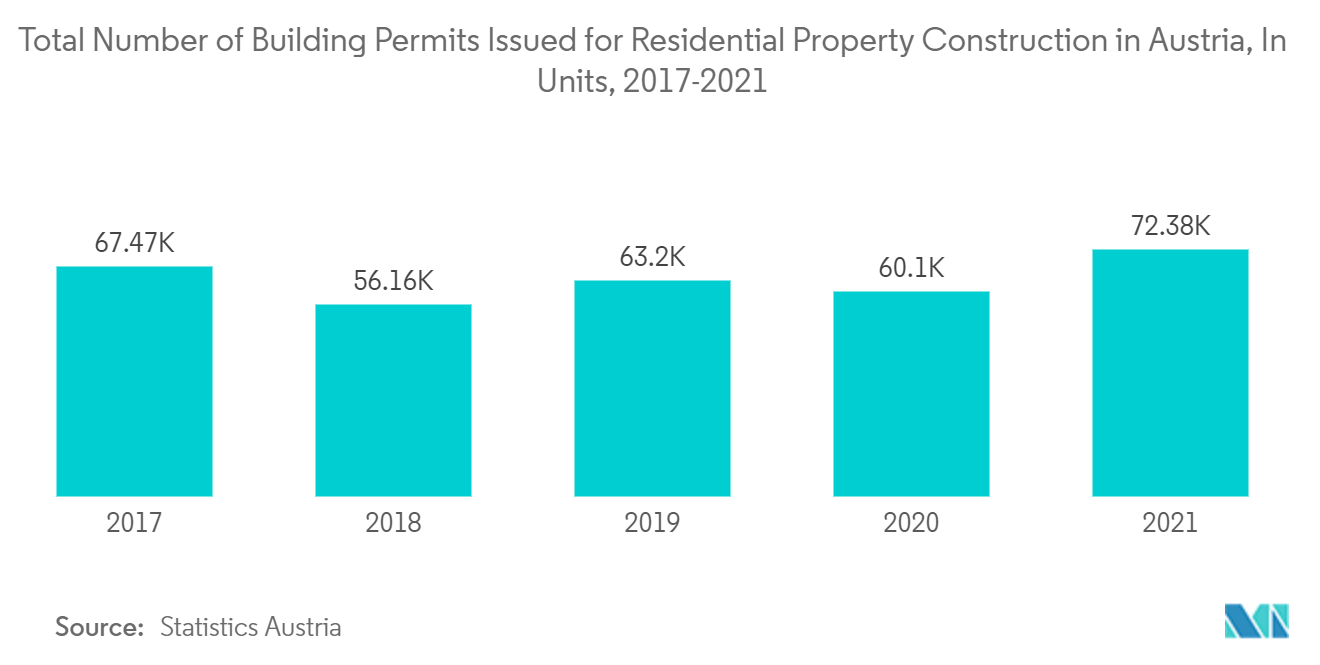Market Trends of Austria Prefabricated Housing Industry
This section covers the major market trends shaping the Austria Prefabricated Housing Market according to our research experts:
The decrease in Labor Force in Austria is driving the demand of prefabricated houses
In the last quarter, 77.0% of Austrians were working. In June 2022, that number went up to 77.1%.The average rate of labor force participation in Austria is 77.1% and is available from March 2021 to June 2022. The data peaked at 77.9% in September 2021 and reached a record low of 76.3% in June 2021. Statistics Austria publishes data on the labor force participation rate in Austria. According to the most recent statistics, Austria's population surpassed 9.0 million in December 2021. Austria's unemployment rate decreased to 4.6% in October 2022.
Governments all over the world are spending money on alternatives to traditional building techniques to help make housing more affordable. The Prefabricated Houses Act 2015 and Housing Construction Incentives Program have made prefabricated homes more accessible and much more economical. People are increasingly realizing the benefits of such dwellings: they can be built much faster with limited disruption, offer greater energy efficiency, and allow for easy modification or expansion. With stringent modern energy standards being legislated in many places, it's no wonder that prefabricated houses are becoming increasingly popular - they ensure compliance with those legislation requirements.

Investments in Prefab Industry Boosting the Residential Property Construction in Austria
The index for new dwellings, which increased by 14.8% in the first half of 2022 compared to the same period in the previous year (Q1: +15.6%, Q2: +14.0%), tracked the price of newly constructed apartments and prefabricated homes.The price of existing homes climbed by the least, 12.7% (Q1: +14.3%, Q2: +11.1%), and the price of existing apartments increased by the most, 13.2% (Q1: +14.3%, Q2: +12.2%). The index for existing homes gained 13.0% overall (Q1: +14.3%, Q2: +11.7%).
In Austria's building sector, prefabricated construction technology has recently attracted increased attention. The prefab business is expanding as a result of rising investments in the construction sector. To solve the issues in the housing market, the government intends to construct more new homes. There, prefabrication is anticipated to be crucial. The major market players have begun investing in increased performance and productivity in response to the market's growth potential and the use of modular construction approaches. A rise in technologically driven projects that employ fundamental ergonomics to explain living comfort can be found in the residential sector.


